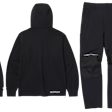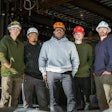
OSHA has proposed a new ruling surrounding personal protective equipment (PPE). The agency advised that PPE should properly fit. The difficult part about adhering to this guideline is the definition of "proper fit". Without a clear and technical definition from the agency, enforcing the ruling could be inconsistent and challenging.
"OSHA stated that improperly fitted PPE can reduce or eliminate the protection offered by these measures. The agency noted that some PPE is not sized appropriately for female construction workers, creating concerns over its effectiveness," said Jonathan Crotty, partner at Parker Poe.
We recently reached out to Mips business development manager Joe Brandel, an expert on safety helmet design, about the implications of the OSHA ruling.
Check out his statements below.
Q&A with Brandel
IRONPROS: What is Mips?
Brandel: “Mips” refers to the Mips safety system designed specifically for helmets. This system is intended to help reduce the rotational motion that may occur during a crash, which is known to pose a greater risk of brain damage than straight impacts.
IRONPROS: Please provide an overview of Mips technology. How does it work?
Brandel: Should you have an accident and hit your head, the Mips system in your helmet is designed to help reduce the rotational motion of certain impacts that may otherwise be transferred to your head.
Rotational motion is a common cause for concussions and more severe brain injury in oblique hits to the head. The Mips system consists of a low friction layer that is mounted inside the helmet. In a crash, the low friction layer is designed to move slightly inside the helmet in order to help redirect forces away from the head.
IRONPROS: Explain how a helmet equipped with the Mips safety system can help construction pros comply with this OSHA's "proper fit" ruling.
Brandel: In the U.S. construction industry alone, a total of 21,400 non-fatal workplace injuries and illnesses were caused by slips, trips, and falls in 20211. These types of accidents can often lead to traumatic brain injuries (TBIs),. The key factors in PPE compliance are comfort and fit: Employees are far more likely to wear helmets and hard hats that fit correctly and comfortably. Proper PPE usage, including safety helmets, is a critical way to enhance safety and protect workers against accidents on the job.
Systems designed to help reduce rotational motion go a step further in that they are developed with the intention to reduce rotational motion to the brain in the event of an impact to the head.
This Q&A is Part 2 of the Mips interview. In Part 1 of the interview, ForConstructionPros and IRONPROS junior editor Merina Shriver spoke to Brandel about the importance and features of a properly fitting safety helmet for construction work.
















